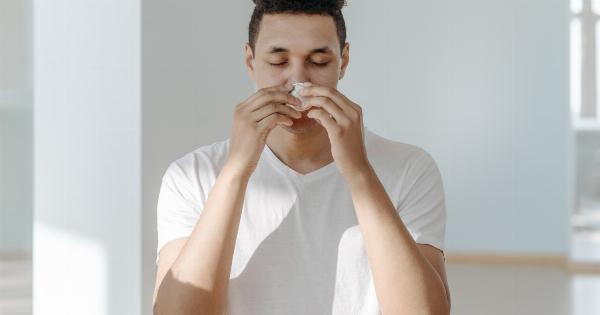As the season transitions from winter to spring, many people experience a range of allergy symptoms. One of the most common and bothersome symptoms is itchy, red, and watery eyes.
While allergies can strike at any time of the year, they tend to be particularly prevalent during the spring months. But why does this happen? Why do allergies make our eyes suffer in spring? In this article, we will delve into the reasons behind this phenomenon.
What Causes Spring Allergies?
Spring allergies, also known as hay fever or allergic rhinitis, are mainly triggered by the increased levels of pollen in the air. Trees, grasses, and weeds release tiny pollen particles as part of their reproductive process.
These particles are light enough to be carried by the wind and can travel for miles, eventually finding their way into our eyes and nasal passages.
The Role of Histamines
When a person with allergies comes into contact with allergens, their immune system recognizes them as harmful invaders and releases a chemical called histamine.
Histamines are responsible for triggering the allergic response, causing a wide range of symptoms including itchy and watery eyes.
Why Are Spring Allergies Particularly Troublesome for Our Eyes?
Spring allergies can be especially troublesome for our eyes due to a few reasons:.
1. Increased Pollen Levels
During the springtime, the concentration of pollen in the air tends to be much higher compared to other seasons.
This heightened exposure increases the likelihood of allergens coming into contact with our eyes, leading to symptoms such as redness, itchiness, and watering.
2. Wind
Spring is often characterized by windy weather. While wind can help disperse pollen, it also carries allergens toward our eyes. The gusts of wind can cause pollen particles to make direct contact with our eyes, exacerbating the allergic response.
3. Dry Conditions
Spring weather can be dry, and this lack of moisture in the air can worsen eye allergies. Dry eyes are more susceptible to irritation, and when allergens come into contact with them, the symptoms can be heightened.
4. Eye Rubbing
When our eyes become itchy and irritated due to allergies, our natural instinct is to rub them. However, rubbing the eyes can further aggravate the condition by releasing more histamines and irritating the delicate tissues surrounding the eyes.
Managing Spring Eye Allergies
While it may not be possible to completely avoid spring allergies, there are several steps you can take to minimize their impact on your eyes:.
1. Monitor Pollen Counts
Stay informed about daily pollen counts in your area. Try to limit your time outside on days when the pollen count is high, particularly during peak hours of 5 a.m. to 10 a.m., when pollen levels are usually at their highest.
2. Wear Sunglasses
By wearing sunglasses, you can create a physical barrier between your eyes and allergens in the air. Wraparound sunglasses work best as they cover a larger area and prevent pollen from entering from the sides.
3. Keep Windows Closed
To prevent pollen from entering your home, keep windows and doors closed, especially during days when the pollen count is high.
Consider using air purifiers or air conditioners equipped with high-efficiency particulate air (HEPA) filters to improve indoor air quality.
4. Avoid Rubbing Your Eyes
Although it may be difficult, try to resist the urge to rub your eyes. Use a clean, damp cloth or artificial tears to soothe any discomfort instead.
5. Consult an Allergist
If your spring allergies are severe and significantly affect your quality of life, consider consulting an allergist.
They can help identify the specific allergens causing your symptoms and recommend appropriate treatment options, such as antihistamines, nasal sprays, or allergy shots.
Conclusion
Spring allergies can make our eyes suffer, but understanding the reasons behind this can help us take proactive measures to minimize their impact.
By staying informed, protecting our eyes, and seeking appropriate treatment, we can ensure a more enjoyable spring season.





























